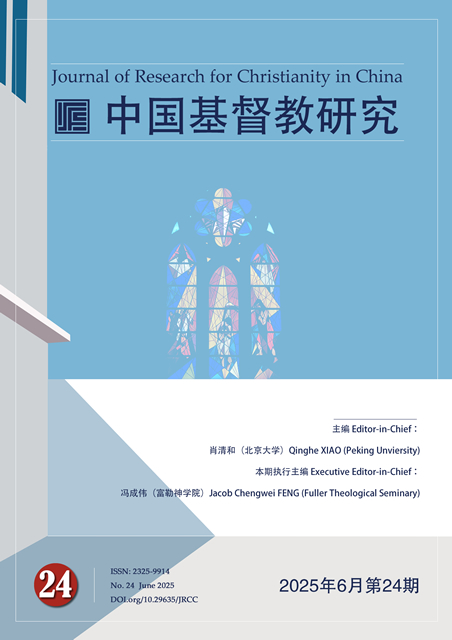Abstract
Although widely known as an “American missionary”, “translator of the Union Mandarin Version”, and “father of modern science education in China”, Calvin Wilson Mateer has made remarkable achievements, which are by no means limited to these fields. During his forty-five years in China, he has made outstanding contributions to the development of scientific translation by translating western academic books, defining scientific terms, and putting forward translation thoughts. Thanks to his accomplishments in spreading Western culture and popularizing scientific knowledge, he was called the initiator of the modernization of Chinese science and the pioneer of cultural exchanges between China and the West. Starting from the translation of Mathletics, this paper examines his scientific and technological translation practice, analyzes his translation thoughts, summarizes his outstanding contributions in this field, and then discusses his influence on the modernization of science and technology in China, to present a different aspect of Calvin Wilson Mateer.
References
西文文献[Works in Western Languages]
Bennett A. A., Fryer J. The Introduction of Western Science and Technology into Nineteenth Century China. Cambridge: Harvard University Press, 1967, pp. 60-61.
Irwin T, Hyatt Jr. Our Ordered Lives Confess: Three Nineteenth Century American Missionaries in East Shantung, Harvard University Press, 1976, p. 76.
Lewis, W. J., Barber, W. T. A, & Hykes, J. R. Records of the General Conference of the Protestant Missionaries of China: Held at Shanghai, May 7-20, 1890. Shanghai: American Presbyterian Mission Press, 1890, pp. 713-714.
Martin W. A. P. “Dr. Mateer’s Geometry-A Review”. The Chinese Record and Missionary Journal, no. 17(1886), pp. 314-316.
Mateer C.W. “School books for China.” The Chinese Recorder, no. 8 (1877), pp. 427-432.
中文文献[Works in Chinese]
丹尼尔·W. 费舍著,关志远等译:《狄考文传——一位在中国山东生活了四十五年的传教士》,桂林:广西师范大学出版社,2009年,第104页。[Fisher, Daniel W. “Calvin Wilson Mateer: Forty-Five Years a Missionary in Shantung, China”. Translated by Guan Zhiyuan et al. Guilin: Guangxi Normal University Press, 2009, p. 104.]
狄考文:邹立文,刘永锡:《形学备旨》,上海:美华书馆,1905年,第1页。[Mateer, Calvin W., Zou Liwen, and Liu Yongxi. “Foundations of Geometry”. Shanghai: American Presbyterian Mission Press, 1905, p. 1.]
高黎平:《近代上海科技翻译界的“美国流”》,《上海翻译》,2006年第1期,第72页。[Gao Liping. "'The American School' in Modern Shanghai's Science and Technology Translation Circles." Shanghai Journal of Translators, no. 1(2006), p. 72.]
龚书铎:《中国通史(近代史前编 1840-1919下)》,上海:上海人民出版社。[1989年,第1783页。Gong Shuduo, ed. “General History of China (Modern History, First Part 1840-1919, Vol. 2)”. Shanghai: Shanghai People's Publishing House, 1989, p. 1783.]
顾长声:《从马礼逊到司徒雷登:来华新教传教士评传》,上海:上海人民出版,1985年,第291页。[Gu Changsheng. “From Morrison to Stuart: Critical Biographies of Protestant Missionaries to China”. Shanghai: Shanghai People's Publishing House, 1985, p. 291.]
侯学刚,万保君:《〈笔算数学〉的内容特点及社会影响》,《郭沫若学刊》, 2014年第3期,第70页。[Hou Xuegang and Wan Baojun. "Content Characteristics and Social Impact of Bisuan Shuxue." Guo Moruo Studies, no. 3(2014), p. 70.]
金其斌:《晚清来华传教士对近代术语翻译及译名统一的贡献与启示》,《外国语言文学 (季刊)》, 2011年第2期,第113页。[Jin Qibin. "Contributions and Insights of Late Qing Missionaries to Modern Terminology Translation and Term Unification." Foreign Languages and Literature (Quarterly) 28, no. 2 (2011), p. 113.]
李迪:《中国数学书大系(副卷第二卷)》,北京:北京师范大学出版社,2000年,第426页。[Li Di. “Comprehensive Series of Chinese Mathematical Books (Supplementary Volume 2)”. Beijing: Beijing Normal University Press, 2000, p. 426.]
李东:《狄考文西学译论研究》,《长江大学学报(社会科学版)》, 2018年第6期,第119-120页。[Li Dong. "A Study on Calvin Wilson Mateer's Theories of Western Learning Translation." Journal of Yangtze University (Social Sciences Edition) 41, no. 6 (2018), pp. 119-120.]
李兆华(主编):《中国近代数学教育史稿》,济南:山东教育出版社,2005年,第130页。[Li Zhaohua, ed. “Draft History of Modern Mathematics Education in China.” Jinan: Shandong Education Press, 2005, p. 130.]
毛奇龄著,西河集卷40,影印文渊阁四库全书本,转引自祝捷:《形学备旨》的特点与影响初探,载《中国科技史杂志》, 2014年第1期,第18页。[Mao Qiling. Xihe Ji, “Collected Works of Xihe, Volume 40.” Facsimile reprint of Wenyuange Siku Quanshu edition. Quoted in: Zhu Jie, "A Preliminary Study on the Characteristics and Influence of Xingxue Beizhi". Chinese Journal for the History of Science and Technology, no. 1 (2014), p. 18.]
王树槐:《清末翻译名词的统一问题》,《“中研院”近代史研究所集刊》, 1969年第1期, 第57页。[Wang Shuhuai. "The Problem of Unifying Translated Terminology in the Late Qing Period." Bulletin of the Institute of Modern History, Academia Sinica, no. 1 (1969), p. 57.]
王扬宗:《傅兰雅与近代中国的科学启蒙》,北京:科学出版社,2000年,第105页。[Wang Yangzong. “John Fryer and the Scientific Enlightenment in Modern China”. Beijing: Science Press, 2000, p. 105.]
王扬宗:《清末益智书会统一科技术语工作述评》,《中国科技史料》, 1991年第2期,第17页。[Wang Yangzong. "A Review of the School and Textbook Series Committee's Work on Unifying Scientific and Technical Terms in the Late Qing Dynasty." China Historical Materials of Science and Technology, no. 2 (1991), p. 17.]
王元德,刘玉峰:《文会馆志》,山东:潍县广文学堂印刷所,1913年,第5页。[Wang Ya1913nde and Liu Yufeng. “Annals of Wenhui Guan”. Shandong: Weihui Guang, 1913, p. 5.]
张龙平:《益智书会与晚清时期的译名统一工作》,《历史教学》, 2011年第10期,第23页。[Zhang Longping. "The School and Textbook Series Committee and Its Work on Term Unification in the Late Qing Period." History Teaching, no. 10 (2011), p. 23.]
张学锋:《清末〈笔算数学〉的内容、传播及其影响》,《中国科技史杂志》, 2013年第3期,第320页。[Zhang Xuefeng. "Content, Dissemination, and Impact of the Late Qing Bisuan Shuxue." Chinese Journal for the History of Science and Technology, no. 3 (2013), p. 320&322.]
祝捷:《〈形学备旨〉底本考》,《自然科学史研究》, 2019年第1期,第83页。[Zhu Jie. "A Textual Research on the Source Text of Xingxue Beizhi." Studies in the History of Natural Sciences, no. 1 (2019), p. 83.]

This work is licensed under a Creative Commons Attribution-NonCommercial-NoDerivatives 4.0 International License.

